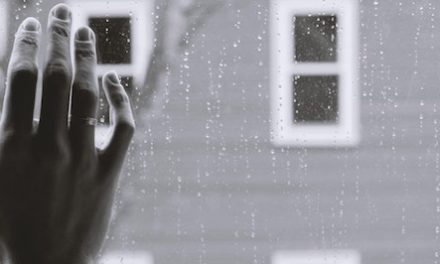Supervised by: Rita Kimijima-Dennemeyer, BA (Hons). Rita recently graduated from the University of Oxford having read Psychology, Philosophy, and Linguistics. She has a particularly interest in clinical psychology, mental health policy, and the ethics of mental health treatment, and she intends to pursue a masters degree in this field.
Abstract
In this research paper, we investigated how isolation has affected different individuals throughout the pandemic. We thought this topic was worth examining, as it is increasingly relevant given the constantly changing situation that affects all people worldwide. The topics we looked into are relatable to individuals of different age ranges and socioeconomic classes. By using the term individuals, we did not have to limit ourselves to the scope of people that were being affected by isolation and were able to observe factors that did not exclude any specific groups of people. Basic findings suggested that there has been a mainly negative impact on these individuals due to isolation. These impacts include negative home environments, feelings of loneliness, and exacerbation of pre-existing mental health conditions. We focused on the home environment because we define isolation as a result of the pandemic as being trapped inside of one’s living environment. The people, space, and circumstances are all part of this environment that individuals are constantly exposed to during periods of quarantine. We found that several individuals have suffered from domestic abuse, experienced financial difficulties, and begun routes to divorce as a result of isolation caused by the COVID-19 pandemic. Feelings of loneliness have a direct relation to this isolation and its resultant changes in social networks. Moreover, the paper elaborates on the exacerbation of pre-existing mental health conditions due to isolation. Quarantine is a prolonged period of isolation. If prolonged isolation occurs, then individuals will be more prone to negative home environments, escalation in mental health issues, and feelings of loneliness, because isolation has a negative impact on individuals.
Introduction
The COVID-19 pandemic has brought about many health issues, not only physical but mental as well. Widespread isolation has played a major role in contributing to feelings of loneliness all over the world. With examination of the situation from a wider perspective, we can identify the overall effects that isolation has on people, like feelings of loneliness or depression (Tulane University, 2020). Those who are experiencing social isolation, especially during the pandemic, often describe themselves as feeling lonely or depressed. People also describe a feeling of anxiety and stress that accompanies being separated from others (Tulane University, 2020). Commonly, “isolation” is understood to be “the fact that something is separate and not connected to other things.” (Cambridge Dictionary, n.d). However, during the COVID-19 pandemic, we believe that the idea of isolation must include new perspectives that have been introduced due to the pandemic. We have developed a definition that we believe suits the concept of isolation in the context of quarantining during the COVID-19 pandemic:
Isolation can now be associated with being forced out from the outside world and, as a result, being constantly exposed to your home environment.
We find that this definition suits the current situation of isolation during the pandemic, as being constantly exposed to one’s home environment constitutes a major aspect of individuals’ daily lives during this time period.
One of the common effects associated with long-term isolation is loneliness. As defined by Harvard professor Colleen Wolsh, “Loneliness is the gap between the social connections that you want to have and the social connections that you do have, and this gap is almost always distressing to a certain extent” (Walsh, 2021). While long-term isolation may be a sufficient cause of feelings of loneliness, it may not be a necessary one, as such feelings can exist in the absence of isolation.
In this study, we investigated how isolation has affected different individuals throughout the pandemic. In our study, we investigated how different individuals, including those with pre-existing mental health conditions, interact with the environment they have been forced into due to the pandemic. We placed particular focus on individuals who found themselves in unsafe environments that may cause emotional distress, including those at risk of physical or mental abuse. These external factors are indirect consequences of the COVID-19 pandemic. If prolonged isolation occurs, then individuals will be more prone to negative home environments, escalation in mental health issues, and feelings of loneliness, because isolation has a negative impact on individuals.
Methods
In order to identify relevant sources for our analysis, we searched key terms in the search engines and sites of Gale and Google and discovered sources that aligned with our pre-chosen talking points. The search terms that we used were “isolation”, “mental health”, “home environments”, “circumstances and situations in an individual’s residence”, “domestic abuse”, “anxiety”, “feelings”, and “loneliness”. After surveying and summarising twelve articles, we selected the most relevant articles for thorough analysis based on a number of criteria. We focussed primarily on sources that were: traceable to an author as well as the publishing dates, studies, and/or experiments; gave factual evidence rather than pure opinions; and were written by credible author(s). The credibility criteria for authors were mainly if they were professionals and/or experts in the area.
We did not select articles that included individual experiences alone or articles whose research question had a broader scope than was relevant for us. We endeavored to find articles that included different perspectives on the situation at hand and to exclude unreliable sources and websites. In the end, we analyzed eleven articles.
We found that, while conducting our research, we focused more on the negative aspects of the pandemic. Since most of the sources we used explored the negative effects of quarantine, we think that our answer to the research question was largely desolate. However, after noticing this, we made sure to include some positive information to contrast against this bias as a sort of “counterargument” in the conclusion.
Results
We mainly used scholarly articles and lab experiments. This means that the research tools within the articles mostly included statistics, lab results, and personal accounts. When researching negative home environments, we looked at sources that explored the nature of romantic relationships turning sour, including domestic abuse and divorce. These findings were helpful because they helped us get a better grasp of the effects of the COVID isolation on these relationships within the home. When researching loneliness as an effect of isolation, we looked into how this feeling was a product of a situation that an individual was experiencing. We looked into the external as well as internal factors that lead to this issue.
When looking into individuals with preexisting mental health conditions, we looked at these topics/sources which were helpful because they included unbiased information and talked about both the pros and cons.
There were multiple articles and sources that described how isolation was having a negative effect on romantic relationships in the home, individuals with pre-existing medical conditions, and how it led to an increase in feelings of loneliness overall. Because of this, our answer to the research question (How has isolation affected different individuals throughout the pandemic?) was largely negative.
The rise of stress and financial difficulties during the pandemic has led to an increase in divorce and domestic abuse rates (Savage, 2020). Being confined to the home environment also means that the victims are constantly in the same space as their abuser and therefore are constantly exposed to their partner’s aggressive behavior. Routines provide space for individuals to interact with different people, have different social spaces, and these environments that are a part of routines can work as a support system. The loss of routines during the isolation caused by the pandemic also means losing these spaces, so many individuals could instead start to rely wholly on their partner as a support system, which can cause a strain on relationships (Savage, 2020). Another effect of the pandemic that could cause a strain on relationships is an escalation in mental health issues. If one partner is experiencing mental health issues, the other partner may be constantly exposed to behaviors associated with their partner’s condition. Therapists and other mental health experts may be equipped to deal with these issues, but if one of them is not accessible in the home then one partner may be left feeling responsible for the other’s mental health, which can be exhausting and lead to disagreements, separations, or even divorce.
We found that the pandemic has led to a worsening of pre-existing mental health conditions or has been the cause of mental illnesses in the majority of individuals.
Our investigation into feelings of loneliness and isolation led us to conclude that these feelings have resulted in many negative outcomes for people. Restrictions imposed on individuals have made it hard for humans to interact and truly live up to their nature of being “social animals”. Many people found the change in social networks to be challenging to deal with and, as an outcome, saw a large impact on their social lives. Professionals worry about the lasting effects that this isolation period will have on people all across the world, with previous studies giving validity to this concern even though they took place over a much shorter period of time.
Discussion
Mental health: Pre-existing mental health conditions
Studies conducted during the pandemic have indicated that individuals with pre-existing mental health conditions have had to manage the decline of their mental health as it has worsened. Mental health conditions often manifest with symptoms of anxiety, depression, stress, apprehension, and fear. Any combination of decreasing levels of physical activity, increased alcohol consumption, higher instances of smoking, and financial difficulties have led to the deteriorating mental health of most individuals. Measures such as worldwide lockdowns, social distancing, travel bans and quarantine add to the stresses faced by those individuals.
The most widely recognized mental issues arising are nervousness and frenzy, obsessive-compulsive symptoms, sleeping disorders, stomach-related issues, PTSD, and depression during the pandemic. These are immediate outcomes of the pandemic.
A recent study suggests that periods of seclusion, even under ten days, can have long-term impacts, with the presence of psychiatric symptoms lasting as long as three years. Humans do not respond well to being isolated for long periods of time. As the Greek philosopher Aristotle reminds us, man is a “social creature,” unfit to live separated from others, since the absence of connections eliminates fundamental conditions for the improvement of individual personality and the activity of reason (Pietrabissa and Simpson, 2020).
Long periods of isolation can negatively influence physical and mental wellbeing, changing sleep patterns and nutrition, along with restricting movement. Isolation has created a divide amongst people and the deterioration of many relationships as people are often scared to meet one another. Loneliness has also led to an increase in the risk of premature death by twenty six percent (Cacioppo et al., 2015; Holt-Lunstad and Smith, 2016). The pandemic has exposed many individuals to the death of a loved one. Moreover, not having the option to hold normal grieving ceremonies has added to the guilt and despair of individuals (Pietrabissa and Simpson, 2020)
A feeling of loss of control over their own lives and not knowing in which direction to go may also exacerbate pre-existing mental health conditions. Depression affects an individual’s capacity to tackle issues, set and accomplish goals, and function adequately in different environments, making recuperation from the crisis significantly more troublesome (Pietrabissa and Simpson, 2020). Individuals usually lose dynamic reactivity even with life’s troubles: there is an expanding inclination to complain, let off the pressure, and depend totally on others for all sorts of activities and daily chores.
Negative Home Environment: Divorce and domestic abuse
Constant exposure to the home environment has created an unfortunate situation where victims of domestic abuse are confined to the same residence as their abusers and have difficulty separating themselves from one another. Additionally, exposure to stress was associated with experiencing partner violence (Karen Nikos-Rose, 2021). Financial difficulties and increased stress in the home have had negative consequences for individuals in a potentially dangerous home environment as well. With the advent of COVID, loss of jobs, decreased income, and other stresses have plagued many individuals. These stresses that have been on the rise as an external factor of the pandemic have acted as a catalyst for increased partner violence. Another effect of the COVID-19 pandemic is the rise, development and escalation of mental health problems for many individuals. This is another reason for the rise in break-ups and divorce rates during the pandemic.
Having to manage one’s partner’s mental health as well as one’s own can be incredibly exhausting, so it makes sense that constant exposure to one’s partner in the home could have negative consequences. It is helpful to note that the effects of the pandemic have also taken away partners’ individual routines. Isolation resulted not only in the comfort of a routine being taken away, but also limited individuals’ ability to spend time away from their partners. This situation did not allow individuals access to other support systems or interaction besides that provided by their partner. Isolation may encourage individuals to rely on their partners for their needs rather than their previous support systems (friends, family, etc.) because it is difficult to maintain contact with others in isolation (Maddy Savage, 2020). This situation is unhealthy because this codependency may spark problems in a relationship that could have been overcome before COVID, but that may mean the end of the relationship during COVID. This phenomenon of increased social issues due to proximity in fact pre-dates the COVID-19 pandemic, and it has been known that “when families spend more time together, violence may occur without specific reason–a dynamic that can be attributed to human psychology” (Booth 2017; Nofziger and Kurtz 2005). Similarly, when partners are isolated together, domestic violence rates and divorce rates may increase for the same reason.
Isolation: Loneliness
From January to April/May, 2020, there was an increase in feelings of loneliness. One study suggests that those with stronger and larger social networks experienced larger disruptions in their social lives. However, those who had weaker social networks reported feeling a similar feeling of loneliness in January as well as through April/May (Lee, Cadigan and Rhew, 2020). Growing loneliness is an apparent and growing problem in industrialized countries, with an estimate of sixty one percent of adults (or three in five) in the United States experiencing feelings of loneliness (Cigna, 2020). It is generally understood that social isolation and the feeling of loneliness are related concepts and often coexist and/or are results of one another.
In recent years, research has given evidence that loneliness can lead to conditions such as depression, alcohol abuse, personality disorders, and Alzheimer’s. This was a part of a larger study taking place in Delhi, India, where the subjects answered a questionnaire to gather information (Diagn, 2014). Social isolation over a prolonged period of time can affect physical health as much as mental health, causing things like altering sleep and nutritional rhythms, as well as fewer opportunities for movement (Pietrabissa and Simpson, 2020). Isolation and loneliness can lead to both physical and mental health disorders such as anxiety and panic, obsessive-compulsive symptoms, insomnia, digestive problems, depressive symptoms, and post-traumatic stress disorder. Moreover, social isolation and loneliness can be stronger predictors of suicidality than other well-known risk factors such as anxiety and hopelessness (Pietrabissa and Simpson, 2020). Social isolation and loneliness are challenging to measure in precise numbers in data, however there is strong evidence that adults aged fifty and older are socially isolated in ways that put their overall health at risk. Studies have found that there is an increased risk of premature death from all causes due to social isolation. As well being associated with an estimated fifty percent increased risk of dementia, poor social relationships have been linked to a twenty nine percent increase in risk of heart disease and thirty two percent increased risk of a stroke. Loneliness among heart failure patients has been associated with a near-four times increased risk of death, sixty eight percent increased risk of hospitalization, and fifty seven percent increased risk of emergency department visits (CDC, 2021). The lasting effects of isolation are also a great concern when looking beyond the period of the pandemic. One study showed that periods of isolation (even less than ten days) can have long-term effects, with the presence of psychiatric symptoms up to three years later (Brooks et al., 2020). This evidence is especially concerning because those aged fifty or older were pressured more than most to stay isolated due to the COVID-19 pandemic.
Conclusion
The Coronavirus pandemic has produced a troublesome and unexpected test for individuals all over the world. For example, the exacerbation of pre-existing mental health conditions has almost been inevitable during the pandemic. In our research, we found that increased stress and financial troubles, which are both on the rise due to COVID-19, were linked with domestic violence. Additionally, being trapped in your home environment makes it very difficult for domestic abuse victims to escape their aggressors. Loss of routines and escalating mental health issues could also cause a strain on relationships between partners living in the same home.
Isolation has also been one of the factors in the creation of negative home environments during COVID-19. The effects that isolation has on individuals vary greatly, however many idiosyncratic problems seem to arise from a change in an individual’s social network. We think that other areas we did not investigate heavily that could have had an effect on our conclusion are the impact of isolation on an individual’s sleep schedule; how varying socio-economic situations and the amount of space within people’s homes had an effect on the state of their mental health; and whether the number of family members within a home had a connection to an individual’s feelings of loneliness. However, in our research, we found that isolation has had a mainly negative impact on different individuals. Strong points that support this include a negative impact on relationships within the home and on individuals with preexisting mental health conditions, as well as a spike in feelings of loneliness for many individuals.
Bibliography
Brooks, S. K., PhD, Webster, R. K., PhD, Smith, L. E., PhD, Woodland, L., MSc, Wessely, S., FMedSci, Greenberg, N., FRCPsych, & Rubin, G. J., PhD. (2020, March 14). Retrieved from https://www.thelancet.com/journals/lancet/article/PIIS0140-6736(20)30460-8/fulltext
Isolation. (n.d.). Retrieved from https://dictionary.cambridge.org/dictionary/english/isolation
Lee, C. M., Cadigan, J. M., & Rhew, I. C. (2020, October 21). Increases in Loneliness Among Young Adults During the COVID-19 Pandemic and Association With Increases in Mental Health Problems. Retrieved from https://www.ncbi.nlm.nih.gov/pmc/articles/PMC7576375/
Loneliness and Social Isolation Linked to Serious Health Conditions. (2021, April 29). Retrieved from https://www.cdc.gov/aging/publications/features/lonely-older-adults.html
McDaid, L. (2020, July 18). Coronavirus: Pandemic has ‘catastrophic’ impact on families. Retrieved from https://www.bbc.com/news/uk-northern-ireland-53327738\
Neelam, K., Duddu, V., Anyim, N., Neelam, J., & Lewis, S. (2021, January 10). Pandemics and pre-existing mental illness: A systematic review and meta-analysis. Retrieved from https://www.ncbi.nlm.nih.gov/pmc/articles/PMC7683956/
Nikos-Rose, K. M. (2021, March 01). COVID-19 Isolation Linked to Increased Domestic Violence, Researchers Suggest. Retrieved from https://www.ucdavis.edu/news/covid-19-isolation-linked-increased-domestic-violence-researchers-suggest
Pietrabissa, G., & Simpson, S. G. (0001, January 01). Psychological Consequences of Social Isolation During COVID-19 Outbreak. Retrieved from https://www.frontiersin.org/articles/10.3389/fpsyg.2020.02201/full#ref17
Sharma, A., & Borah, S. B. (2020, July 28). Covid-19 and Domestic Violence: An Indirect Path to Social and Economic Crisis. Retrieved from https://link.springer.com/article/10.1007/s10896-020-00188-8
Understanding the Effects of Social Isolation on Mental Health. (2020, December 8). Retrieved from https://publichealth.tulane.edu/blog/effects-of-social-isolation-on-mental-health/
Why the pandemic is causing spikes in break-ups and divorces. (2020, December 6). Retrieved from https://www.bbc.com/worklife/article/20201203-why-the-pandemic-is-causing-spikes-in-break-ups-and-divorces
Walsh, C. (2021, February 17). Young adults hardest hit by loneliness during pandemic, study finds. Retrieved from https://news.harvard.edu/gazette/story/2021/02/young-adults-teens-loneliness-mental-health-coronavirus-covid-pandemic/




